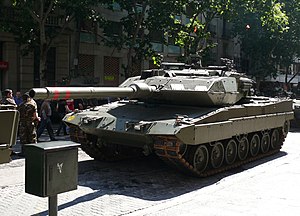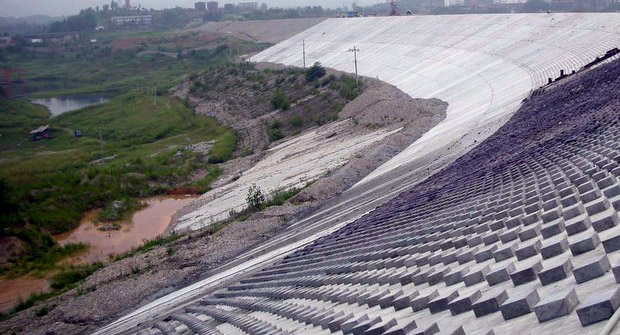It’s Jam Band Friday – http://www.youtube.com/watch?v=LJ16hEpB_Sk
Conventional post election wisdom has the Cap and Trade legislation being declared dead. But, it is sitting in a Senate that the Democrats control. Will they bust it lose during the end of the year session. Who knows, but I think the issue will not go away so sooner or later something will have to be done. I mean Russia caught on fire. How much more does it take than that.
http://www.washingtontimes.com/news/2010/nov/4/clean-coal-is-as-dead-as-cap-and-trade/
MILLOY: Clean coal is as dead as ‘cap-and-trade’
Mitch McConnell had better study up on the election results
By Steve Milloy-The Washington Times
While we shouldn’t expect our left-wing elitist president to understand Tuesday’s electoral rejection of his “progressive” prescriptions for America, we should expect Senate Minority Leader Mitch McConnell, Kentucky Republican, to get it.
But Mr. McConnell seems to have missed the message, at least when it comes to “cap-and-trade” – odd for a coal-state politician. The day after the election, Mr. McConnell said, “The president says he’s for nuclear power. Most of my members are for nuclear power. The president says he’s for clean coal technology. Most of my members are for clean coal technology. There are areas that we can make progress on for the country.”
Aside from the canard of President Obama sincerely supporting nuclear power and the fact that Republicans ought to avoid the loaded and already co-opted-by-the-left word “progress,” so-called “clean coal” is a form of Obama-think – a discredited cap-and-trade concept that was more trap than sincere policy.
Some in the coal industry and some coal-burning electric utilities had been talked into supporting cap-and-trade, provided that taxpayers and ratepayers forked over billions (if not trillions) of dollars for so-called “carbon capture and sequestration” (CCS) – that is, burying utility carbon-dioxide emissions deep underground and hoping they stay there safely.
But to the extent that any so-called environmentalists paid any lip service to clean coal and CCS, it was only to lure coal and utility suckers into cap-and-trade. Does anyone really believe, after all, that the greens would allow utilities to inject underground billions of tons of highly pressurized carbon dioxide all over the nation? They fought tooth-and-nail, after all, to prevent the storage of sealed casks of spent nuclear fuel one mile underground in the Nevada desert.
:}
http://www.youtube.com/watch?v=Vm-pFqdqcZY&feature=related
Which would they prefer, a tax on carbon? This guys lists all the reasons for cap and trade mechanisms to be set up by the Federal Government and heavily policed by the Federal Government. Nonetheless he likes carbon taxes because they supply more stability. But his belief that it won’t be passed on to the customer is asinine.
http://www.youtube.com/watch?v=RSJdjb6K5i4&feature=fvw
:}
http://www.greenchipstocks.com/articles/cap-and-trade-legislation/810
Cap and Trade Legislation is Fatally Flawed
My First Ever Mea Culpa
By Nick Hodge
Tuesday, April 13th, 2010
We may never see cap and trade in this country.
Those are words I never thought I’d write.
In fact, I’ve been touting the benefits of a cap and trade market since 2007. But new ideas, unraveling facts, and recent events have changed my thinking.
So today, I’m publishing my first ever mea culpa.
Cap and Trade Legislation is Fatally Flawed
My First Ever Mea Culpa
By Nick Hodge
Tuesday, April 13th, 2010
We may never see cap and trade in this country.
Those are words I never thought I’d write.
In fact, I’ve been touting the benefits of a cap and trade market since 2007. But new ideas, unraveling facts, and recent events have changed my thinking.
So today, I’m publishing my first ever mea culpa.
Carbon Should Still be Priced
To be clear, I’m not saying that carbon shouldn’t have a price. By all means, it should.
What I’m saying is that cap and trade isn’t the way to implement it.
At the end of the day, carbon dioxide is a harmful waste product that needs to be handled. Companies don’t get free passes for treating and disposing of other waste streams their businesses generate. Why should carbon be any different?
Not charging companies for emitting carbon is giving them free reign over something they cannot and will not ever own: the atmosphere.
We don’t let companies freely dump waste into rivers or lakes… We don’t allow companies to dump waste in forests… So why, then, are we still letting companies dump a known pollutant into the atmosphere unchecked?
This is why everyone speaks of how cheap coal is. It’s not really that cheap, we just don’t include the price of carbon in its costs.
Carbon isn’t a business externality — meaning, companies that produce it can shift the cost to society — and it can no longer be treated as such.
The Trouble with Cap and Trade
:}
You can go to the article for the rest. I personally support a carbon tax. But I have always said that Cap and Trade is what we get because high finance wants it that way. More Monday.
http://www.youtube.com/watch?v=wdAhR-c–20&feature=related
:}






 Greenpeace marine biologist Paul Horsman shows globs of oil on a jetti at the mouth of the Mississippi River on May 17, 2010. (John Moore / Getty Images) As the EPA and BP fight over the Gulf oil spill cleanup, the Daily Beast crunches the numbers and ranks the most contaminated sites in the nation.
Greenpeace marine biologist Paul Horsman shows globs of oil on a jetti at the mouth of the Mississippi River on May 17, 2010. (John Moore / Getty Images) As the EPA and BP fight over the Gulf oil spill cleanup, the Daily Beast crunches the numbers and ranks the most contaminated sites in the nation.







 Secretary of State for Energy & Climate Change, Ed Milliband, chose the opening day of Ecobuild to launch the Government’s new Pay As You Save initiative. After the announcement, the Minister went on to meet some of Ecobuild’s 1,000 exhibitors.
Secretary of State for Energy & Climate Change, Ed Milliband, chose the opening day of Ecobuild to launch the Government’s new Pay As You Save initiative. After the announcement, the Minister went on to meet some of Ecobuild’s 1,000 exhibitors. The collaboration between Saint-Gobain and Nottingham University to design, build and operate Europe’s most attractive, effective and energy efficient zero carbon solar powered house came to fruition at Ecobuild with the debut of the Nottingham HOUSE (Home Optimising the Use of Solar Energy). The structure now moves on to Madrid for the final of the Solar Decathlon Europe competition.
The collaboration between Saint-Gobain and Nottingham University to design, build and operate Europe’s most attractive, effective and energy efficient zero carbon solar powered house came to fruition at Ecobuild with the debut of the Nottingham HOUSE (Home Optimising the Use of Solar Energy). The structure now moves on to Madrid for the final of the Solar Decathlon Europe competition. BRE Global announced the winners of the 2010 BREEAM awards at Ecobuild, each building representing exemplary sustainable design and construction.
BRE Global announced the winners of the 2010 BREEAM awards at Ecobuild, each building representing exemplary sustainable design and construction. Ecobuild was the launch platform for hundreds of new sustainable construction products.
Ecobuild was the launch platform for hundreds of new sustainable construction products. Winner of the Green Shoots Best Innovative Sustainable Construction Product award, Thomas Lipinski of Green Structures, received a cheque for £5,000 from Green Shoots sponsor, Neil Morgan, Lead Technologist – Low Impact Buildings, Technology Strategy Board.
Winner of the Green Shoots Best Innovative Sustainable Construction Product award, Thomas Lipinski of Green Structures, received a cheque for £5,000 from Green Shoots sponsor, Neil Morgan, Lead Technologist – Low Impact Buildings, Technology Strategy Board.